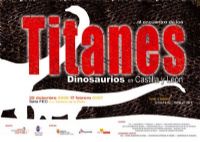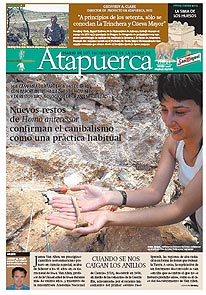
La IUCN (World Conservation Union) oferta un puesto de trabajo por dos años para su programa de áreas Protegidas. El contrato es por dos años y el contratado o contratada realizaría su labor en Gland (Suiza). Para los interesados adjuntamos la información que nos ha llegado:
UNESCO’s World Heritage Convention (WHC) is one of the most prestigious international agreements which aims to protect the world’s remaining natural and cultural places of outstanding universal value (OUV). The World Heritage (WH) List comprises those sites which both meet the rigorous criteria for OUV and that in principle should have the highest standards of care and management. Natural World Heritage sites are often considered as nature's “crown jewels” and include sites such as the Galapagos Islands, the Serengeti, and the Great Barrier Reef. IUCN has a key role in the World Heritage Convention as the Advisory Body for natural and mixed sites. In undertaking this role IUCN draws on its expertise within the World Commission on Protected Areas (WCPA) which has a global leadership role on protected areas issues. World Heritage is one of the Flagship Products of IUCN, which has a clear and important role as the Advisory Body for Natural and Mixed World Heritage properties under the World Heritage Convention. This role mainly involves four functions: (1) evaluating new natural and mixed properties which are proposed for inscription on the World Heritage List; (2) monitoring the state of conservation of existing natural and mixed World Heritage properties; (3) promoting a range of training and capacity building initiatives; and (4) providing guidance on the strategic implementation of the Convention. There is considerable potential for expanding this role to ensure that natural world heritage sites are used effectively to promote conservation and development efforts worldwide. IUCN’s role on World Heritage is led by the IUCN Programme on Protected Areas (PPA). Key activities are implemented in close coordination with UNESCO’s World Heritage Centre and other Advisory Bodies of the WH Convention and are financially supported by a contract with UNESCO. IUCN has recently taken a policy decision to strengthen its efforts in world heritage and the Special Adviser, World Heritage will play a key role in ensuring that the potential of world heritage is fully realized.
JOB DESCRIPTION
• Developing and implementing a Business Plan, with an associated project portfolio, to ensure that significant resources are raised to enhance IUCN’s capacity to work on World Heritage at global, regional and national levels;
• Ensuring the full potential of natural and mixed World Heritage sites as “flagships” for conservation is fully realized through the development of innovative project proposals;
• Supporting the IUCN evaluation process to ensure the highest professional standards are applied;
• Supporting implementation of the Cameron review , to ensure all recommendations are implemented in a timely and effective manner;
• Mobilizing and motivating experts within IUCN’s Global and Regional Programmes and expert networks, in particular WCPA, to ensure they are effectively contributing to IUCN’s work on World Heritage; and
• Maintaining close coordination with PPA/WCPA work to ensure synergy and complementarity with the PPA/WCPA Strategic Plan.
REQUIREMENTS
• Substantial and progressive international experience in heritage conservation and/or protected area management. At least 10 years' work experience would be expected. Relevant field experience is essential;
• Commitment, energy and vision in relation to heritage conservation;
• Proven track record in relation to project development and fundraising;
• High-level management and organizational skills;
• Outstanding communication skills, including informal (interpersonal skills and networking) and formal (presentation) skills;
• Dynamic and communicative personality;
• Relevant academic background, preferably in environmental management and/or natural resources conservation and management;
• Outstanding written and spoken fluency in English; skills in French and Spanish are highly desirable;
• Extensive experience working in cross-cultural and multi-disciplinary teams; and
• Willingness to travel and work non-traditional hours as required.
APPLICATIONS
Applicants who meet the qualification requirements are requested to submit at the latest by 31 January 2007 their curriculum vitae and a supporting letter of motivation in English, and the names and contact details of three referees (including one recent employer) to: Human Resources Officer The World Conservation Union (IUCN) Rue Mauverney 28, 1196 Gland, Switzerland Fax: +41 22 999 0339 E-mail: jobapplications@iucn.org
Suerte para los que se animen



